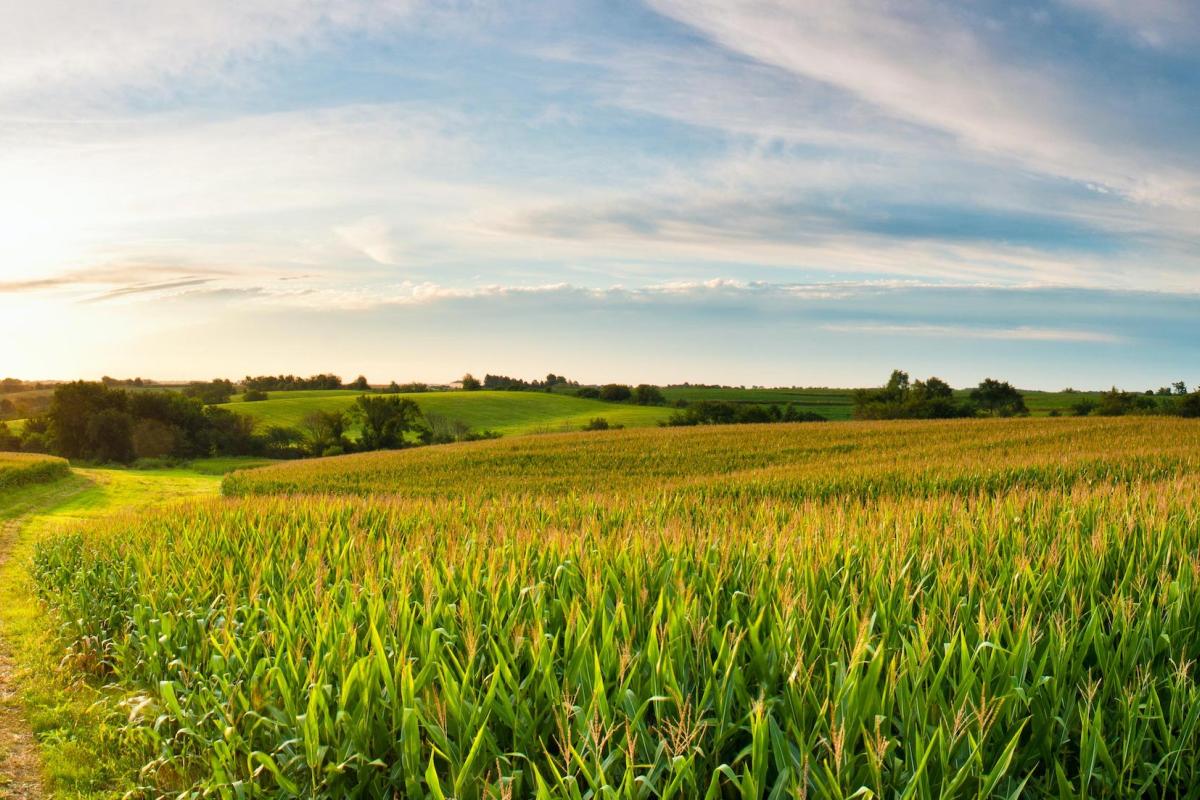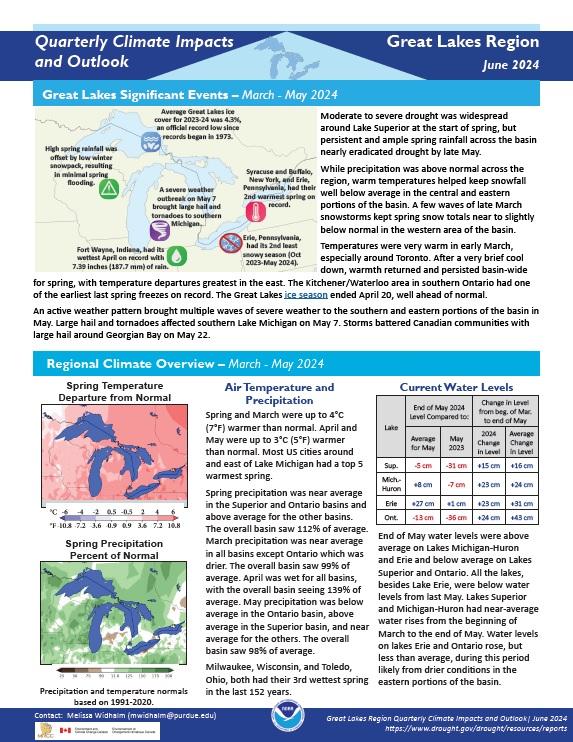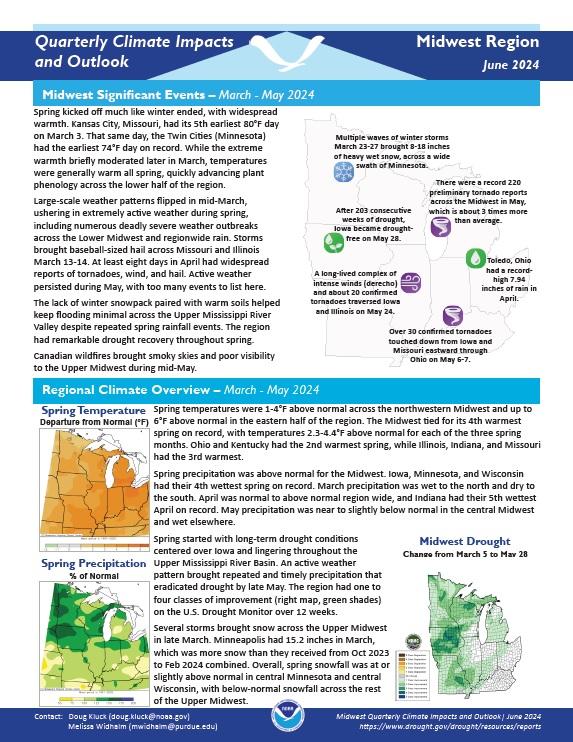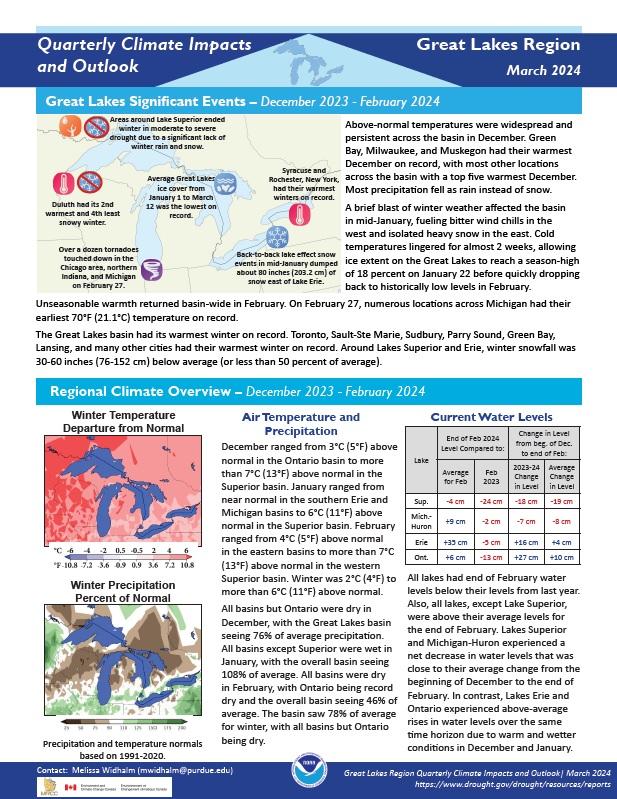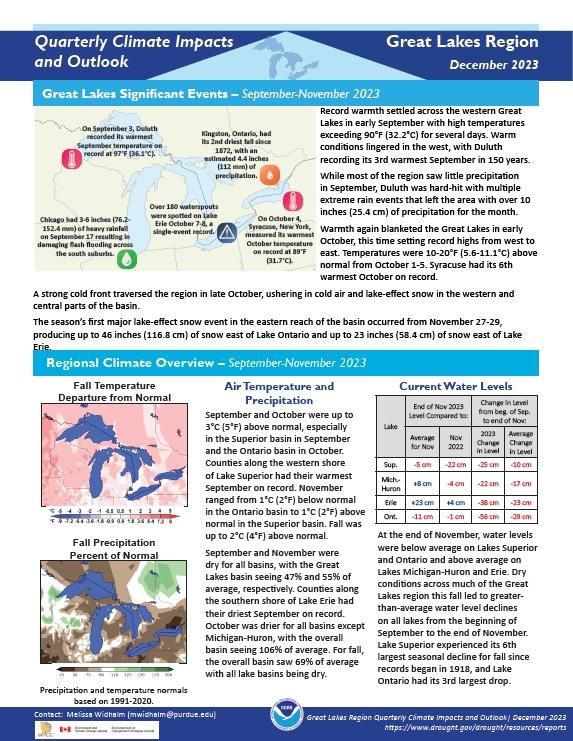For the latest forecasts and critical weather information, visit weather.gov.
Quarterly Climate Impacts and Outlook for the Great Lakes Region for June–August 2024. Dated September 2024.
Summer temperatures ranged from near normal to 2°C (4°F) above normal, particularly in the southern Ontario basin. Summer featured near- or above-average rainfall for all basins, with the overall basin seeing 113% of average.
Quarterly Climate Impacts and Outlook for the Midwest Region for June–August 2024. Dated September 2024.
Summer temperatures were near normal for the majority of the region, except in Ohio and central Kentucky where temperatures were 1–2°F above normal. Summer precipitation (June, July, and August combined) for the Midwest was slightly above normal overall, with precipitation 125%–175% of normal across the northwest, decreasing to 50%–75% of normal across the southeast.
Quarterly Climate Impacts and Outlook for the Great Lakes Region for March–May 2024. Dated June 2024.
Spring and March were up to 4°C (7°F) warmer than normal. April and May were up to 3°C (5°F) warmer than normal. Most U.S. cities around and east of Lake Michigan had a top 5 warmest spring. Spring precipitation was near average in the Superior and Ontario basins and above average for the other basins. The overall basin saw 112% of average precipitation.
Quarterly Climate Impacts and Outlook for the Midwest Region for March–May 2024. Dated June 2024.
Spring temperatures were 1-4°F above normal across the northwestern Midwest and up to 6°F above normal in the eastern half of the region. Spring precipitation was above normal for the Midwest. Iowa, Minnesota, and Wisconsin had their 4th wettest spring on record.
Quarterly Climate Impacts and Outlook for the Great Lakes Region for December 2023–February 2024. Dated March 2024.
Winter was 2°C (4°F) to more than 6°C (11°F) above normal. The basin saw 78% of average precipitation for winter, with all basins but Ontario being dry.
Quarterly Climate Impacts and Outlook for the Midwest Region for December 2023–January 2024. Dated March 2024.
Winter temperatures were 4-8°F above normal across the lower Midwest and up to 12°F
above normal across the upper Midwest. The Midwest, Iowa, Minnesota, Wisconsin, and
Michigan had the warmest winter on record. Winter precipitation was near average for the Midwest, oscillating between wet and dry across the region from month to month. Minnesota had a record-wet December. Illinois had its second driest February.
Quarterly Climate Impacts and Outlook for the Great Lakes Region for September–November 2023. Dated December 2023.
Fall temperatures in the region were up to 2°C (4°F) above normal. The overall basin saw 69% of average precipitation with all lake basins being dry.




